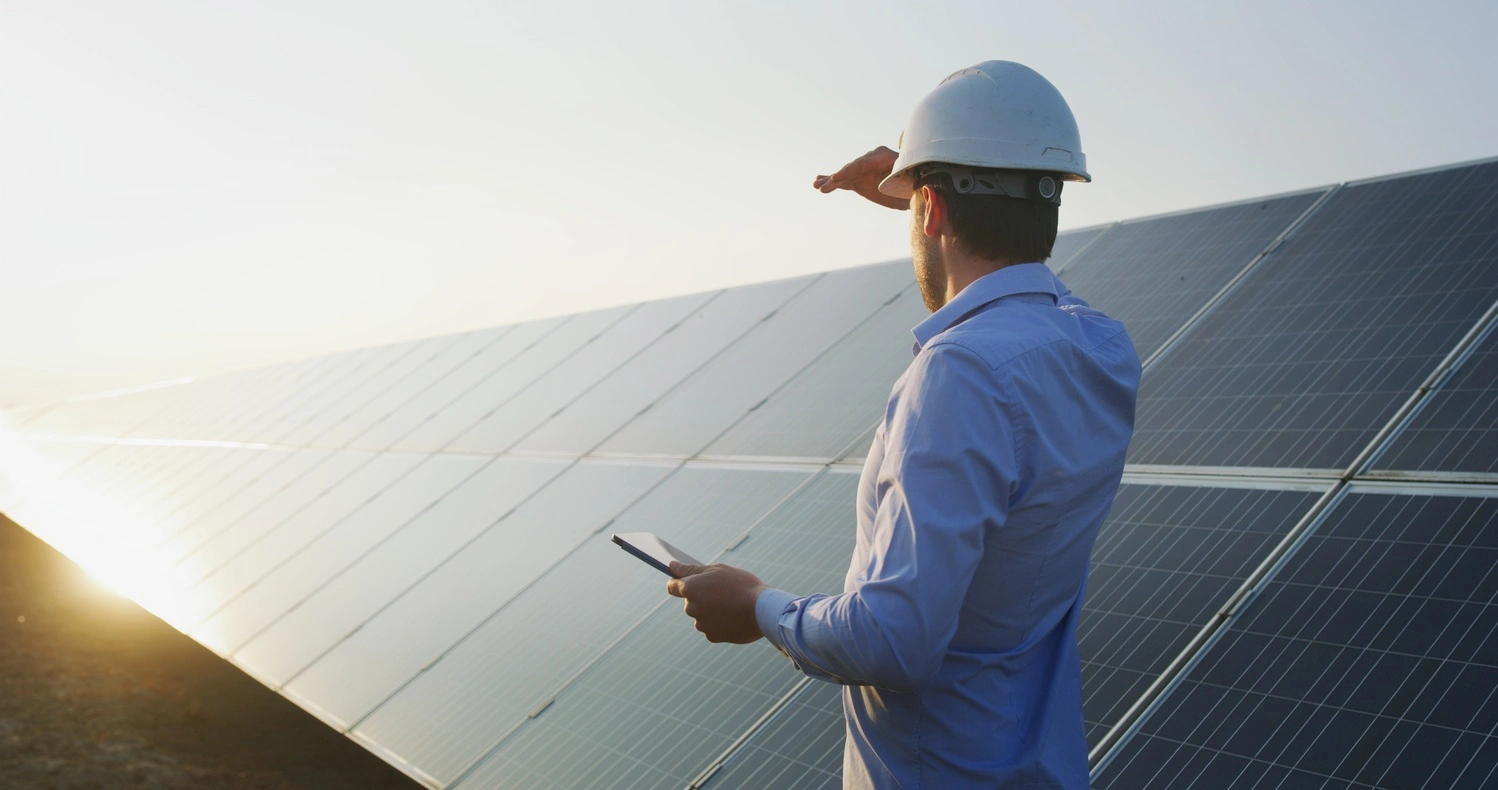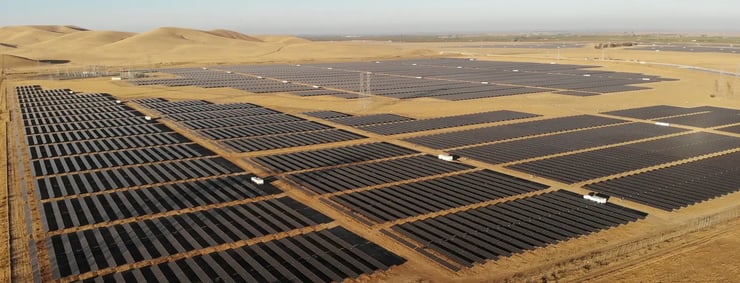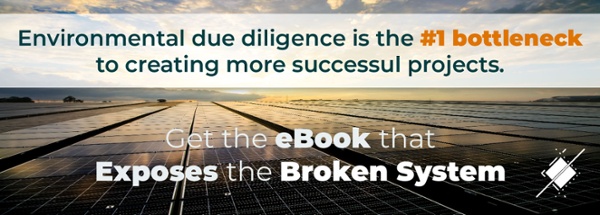
Listen to the audio version
1-megawatt 2-megawatt red megawatt blue megawatt; some are ground-mounted, some are large-scale, some solar panels.....you get the point, right? Okay, cool. We are done with that now.
From start to finish, a solar energy development project takes years. Sometimes those years are easy, going off without a hitch. Sometimes they make you think longingly of Dante’s Fifth Circle of Hell, where damned souls spend eternity waging war on the surface of the River Styx.
Because, to be honest, even that sounds more fun than dealing with irritable stakeholders and sneaky environmental consultants. (Just us?)
In all seriousness, finding and securing a solar energy site can pose a nightmarish challenge, even to the most hardened developers. Utility-scale solar facilities are fighting for salvageable sites and working against systems that supposedly have the same goals as them *cough cough* consultants *cough*. The bad news is that there’s no way around many of these hurdles. The good news is that there are some pivots you can make to your process that will significantly speed up the process and lighten your due diligence burden and project timeline. Being in the solar farm business doesn’t have to be synonymous with sleepless nights, wasted money, and endless comfort snacks.
Here are five steps to help you secure solar energy development sites faster and more reliably, so you can realize shorter timeframes and see more completed projects.
1. Determine Your Solar Energy Goals
First and foremost, you gotta figure out what your goals are. This will be primarily based on the energy load or demand in the surrounding areas and how far the utility lines can carry the power. Other factors include your budget, partnerships, location, governmental requirements and restrictions, and so forth.
Considering only 10 percent of solar land identified during the site selection process ultimately makes it to project completion (yikes), you need to be very specific with your goals. That way, you have a greater chance of finding a site that meets those goals and avoids surprises down the road. Ask questions such as:
- Who will use this power?
- How far will it have to travel to be useful?
- What will the storage requirements be?
- Is there infrastructure available for such a project already?
- If not, can you create it?
- What roadblocks might you encounter?
If you’re a seasoned solar developer, you already have a good handle on all these questions. But again, it’s essential to think through everything ahead of the site selection process to give yourself the greatest chance of finding a site that works.

2. Feeding the Energy Grid: Create a Project Plan
Whether you are building a community solar farm or outlining a Power Purchase Agreement (PPA) agreement, a clear plan is crucial for success. A renewable energy plan, checked by your team and approved by the people upstairs, can also streamline your search. It will help ensure everyone is on the same page before you begin the hunt. You’ll want to:
- Outline your power generation goals
- Outline your storage goals
- Set benchmarks for short and long periods
- Match up your goals with the goals of local, state, and federal government
Balancing generation and demand is tricky, and the best way to do that is with a clear plan that gets everyone on board upfront.
3. Create a List of Suitable Solar Plant Sites
Next up, time to make a list of potential sites. There’s, with every solar company and utility company in the energy industry racing to find possible parcels for development. With more and more companies developing large-scale energy projects, it isn’t easy to find the perfect site for solar projects.
Young, healthy solar equipment needs space to grow. It requires the room to stretch its inverters and PV systems and one day get big and strong, growing into its own solar farm. Finding the perfect site for this is key to success. Though there are many different types of solar farms that your bright-eyed equipment can become, suitable sites have several characteristics in common. Some of those characteristics include:
- Access to power lines and easy utility grid connection
- Enough space, roughly between 2.5 and 4 acres, for a 1-watt solar power plant
- Light wind, low humidity, moderate temperatures, and lots of sun
- Land covered with crops and grass, typically
- Close to a substation
Using these essential traits, people and companies we might call “bird dogs” are making a mint. They race around, identifying possible sites for renewable energy installations, then pass them off to solar industry developers for consideration.
On the one hand, it’s great that we have so many motivated people and companies trying to help Mother Earth. On the other, this is a numbers game. The more … uh, spaghetti? … you throw it at the wall, the more will stick (so much for clean energy..). Or at least, that’s what they figure.
Unfortunately, that can result in many subpar or straight-up unworkable site recommendations for you. No wonder finding suitable Greenfield land is so darn time-consuming – mostly because due diligence takes so long and eliminates so many sites. That’s why, after making your list, you need to make a big old pivot.
4. Assess Risk and Complete Environmental Due Diligence for Each Commercial Solar Project
Once you have a list of potential sites, you start digging. Not literally; that comes later. Right now, you’re figuratively digging … for facts, figures, regulations, histories, reports, and anything else that will help you assess the viability of a potential site for your specific land use.
Traditionally, developers turn to environmental consultants to help them complete their due diligence in a timely fashion.
*chokes on iced tea*
Sorry, did we say “environmental consultants” and “timely fashion” in the same sentence? Apologies, it’s been a long week. The truth is, the risk assessment and due diligence processes are irrevocably broken. You’d think that helping the earth and making money would be strong enough incentives for these professionals to create a logical business plan with reasonable timelines for their services. These so-called consultants hold the keys to the kingdom, taking months and charging thousands to give you a “maybe” or – far more often – a “nope” on a site.
Why? Because any piece of land requires dozens of considerations to be taken into account, including:
- Environmental concerns
- Tribal limitations
- Public use spaces
- Access to power lines
- Wetlands
- Endangered species
- Tons more…
You probably don’t need us to tell you how much of a pain it is to sort through this information and come to an answer. What does the average environment critical issues analysis report cost you, anyway? Somewhere around $3,500? And how many do you order a year? Five? A dozen? Two dozen? MORE? How long do you spend waiting on each one?
We’re betting your answers to these questions aren’t cheerful. But if there is one thing you take from this post, it is this: Just because it’s always been done this way doesn’t mean it always HAS to be done this way.
There is a better way: using software to help you complete environmental due diligence in mere minutes. No black box. No endless wait times. No unreachable consultants. (Psst … skip to the bottom to learn more.)

5. Details of the Land Lease: Speak to Other Stakeholders
Once you’ve got reports in hand and you like a site, or multiple, it’s time to speak to the other stakeholders. That often includes the current owners of the site, who range from farmers to the federal government. Are they willing to sell? For how much? How long will the process take, and are there other considerations (like Title restrictions?)
Also, if you haven’t already done so, you need to get your own Powers That Be on board. That means your higher-ups (unless you are your boss) and investors. Only once you’ve got them can you break ground … literally this time.
Want to speed that process along? Keep reading.
Save Weeks with Automated Environmental Due Diligence Reports
Are you ready to take control of the environmental permitting process once and for all? We’re ready to help you. At Transect, we are all about sustainability and efficiency. This sentiment roughly translates to, we like saving your time and emotional energy sources so that you don’t burn out during the environmental stages of development
.The Transect platform generates bank-ready environmental due diligence reports in just minutes, compared to the weeks or months of silence from traditional consulting “experts.” Now you can combine all your reports, siting tools, and sharing capabilities in one place, ready to push out to your team or take to your lender.
Ready to learn more about how easy this process can be? Ready to save weeks and thousands of dollars? Ready to find more sites more quickly? Schedule a demo today and get started.
Read more about the broken environmental permitting system in our eBook below!
